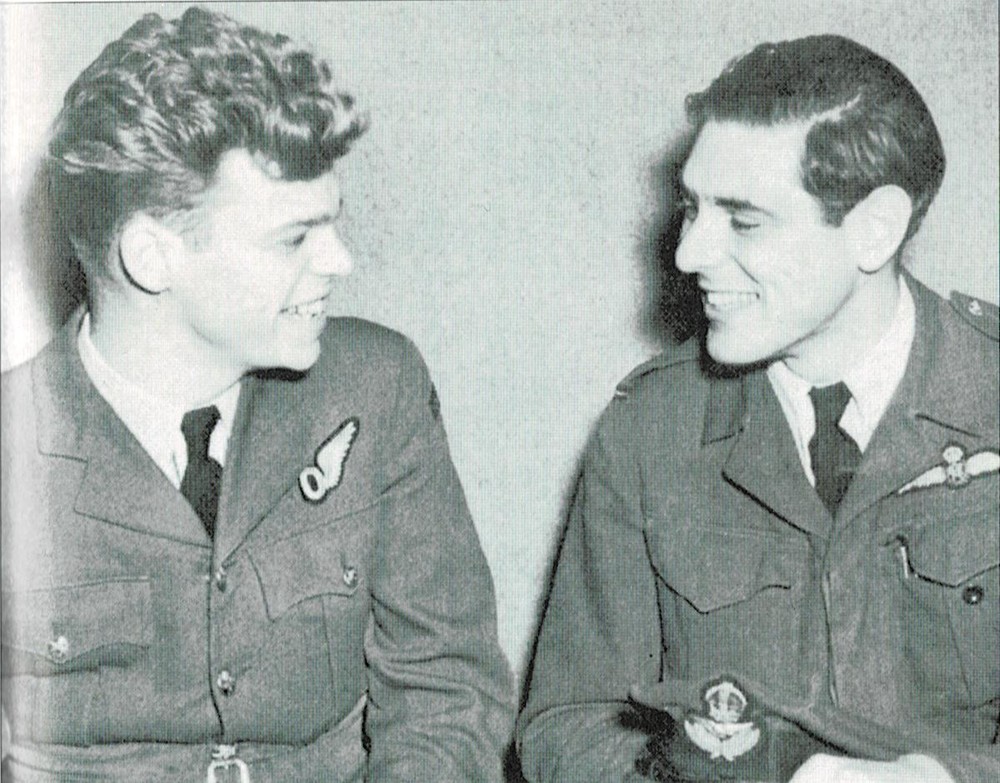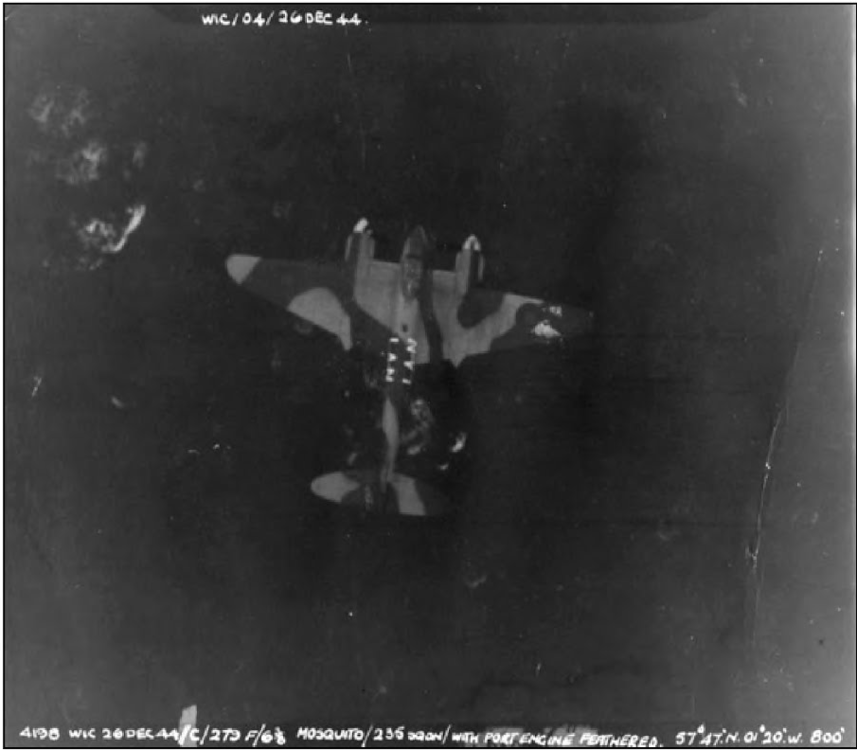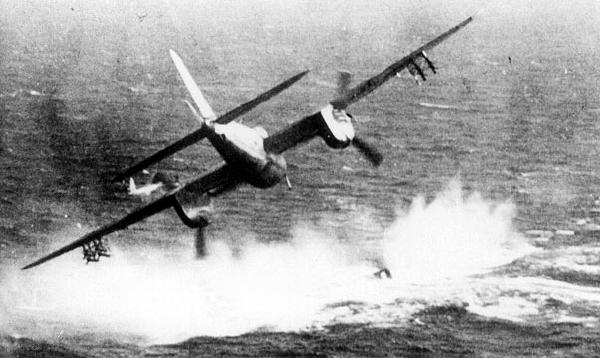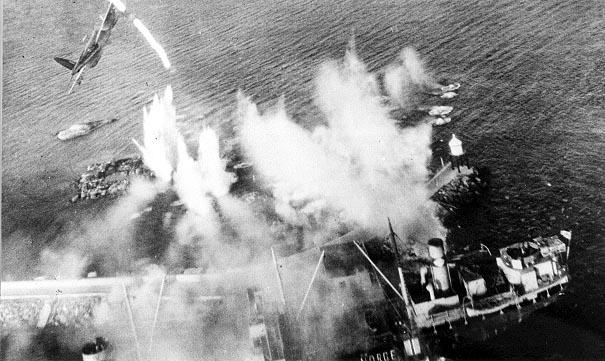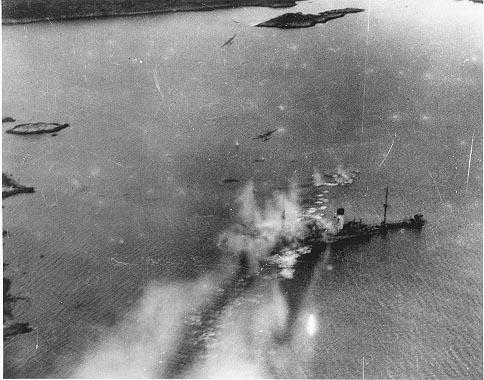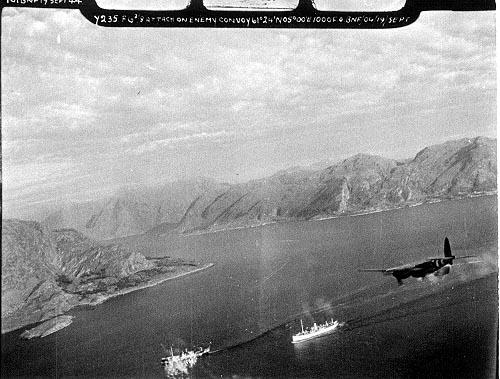

Bozon
Members-
Posts
844 -
Joined
-
Last visited
Content Type
Profiles
Forums
Events
Everything posted by Bozon
-

DCS: de Havilland DH.98 Mosquito FB Mk VI Discussion
Bozon replied to msalama's topic in DCS: Mosquito FB VI
They will not release the mossie before 2.7 version. Probably not at the same time as well - that doesn’t sound wise. My bet is on a release shortly after the v2.7 dust settles. -

DCS: de Havilland DH.98 Mosquito FB Mk VI Discussion
Bozon replied to msalama's topic in DCS: Mosquito FB VI
If by T/W you mean thrust to weight ratio then this is about the same as the inverse of power loading, which is mass per engine power. “Thrust” terminology is not often used in relation to prop planes because the prop can change the relation between power and actual thrust quite a bit. Anyway, P-38 and Mosquito did not have lower power to mass ratio than most single engine fighters. They had twice the power and roughly twice the weight (depends on configuration etc.). Power to mass is not a crucial stat for WWII fighters. Heck, I bet an empty Lancaster would get a decent power to mass ratio, even compared to a single engine fighter. It didn’t do much good. -

DCS: de Havilland DH.98 Mosquito FB Mk VI Discussion
Bozon replied to msalama's topic in DCS: Mosquito FB VI
The power loading of the Mossie is close to that of the P-51. The P-38 is even a little lower (i.e., more power per weight). This is not what holds the twin-engine fighters back. The twins have a lot more inertia, especially in the roll, so while the P-38 had a good roll rate with boosted ailerons, it took longer to reach that roll rate than it took for say a FW190. It also takes longer to stop the roll, so the plane feels less “snappy” in spite of a great roll rate on paper. Heavier weight also induce more induced-drag at low speeds. That means that the back of the power curve is significantly steeper in the twins vs. the singles. So when these planes slow down to near stall they tend to sag and sink more than the singles. When we try to compare 2 planes there are more factors involved, but this is the general tends we expect to find. P-38 was a bit special because the counter rotating props offered some unique advantages at low speeds. The fighter that was the direct decedent of the mossie - the “Hornet” was a twin and one of the most capable piston engine fighters ever. Eric Brown said it was the best. I don’t know exactly where it ranks, but it was way up there at the top. So twin engines does not automatically makes for a bad fighter. -

DCS: de Havilland DH.98 Mosquito FB Mk VI Discussion
Bozon replied to msalama's topic in DCS: Mosquito FB VI
Mossie FB.VI entered service in May 1943 when the Luftwaffe had nothing like the Dora and 109K4, so what it will face in DCS are not its typical opponents. It was never meant to be a day fighter - one of the very few roles this multi-role air-frame was not the best at. However, this does not mean that the FB.VI was not a dangerous opponent in a dogfight - it actually was. When FB.VI met with 109s and 190s during daytime, it was usually on a strike mission. Shooting down enemies was not the priority and the situation would typically place the Mossies at a disadvantage - therefore they would choose to disengage. Also remember that dog fighting was not the focus of these pilots training. BUT, with aggressive pilots (often transferred from fighters) or when cornered, the FB.VIs were not an easy kill and often came out on top. FB.VIs on day-rangers, or coastal command "Instep" patrols would attack 190/109s if they felt they had the advantage (numerical, position, or surprise). As to how it will fare in multiplayer, the only reference we currently have is other games. Aces-High has pretty good flight models and there I flew FB.VI almost exclusively for many years - and I flew it as an air superiority fighter (I was terrible at bombing, could barely guarantee my bombs will even hit earth): 190A8 if it did not have an initial advantage was basically food - all it could do is try to shake you off in a max speed dive or waste your ammo by rolling and jinking. 190D if it tried a knife fight against the Mossie, the Mossie would distribute its parts all over the terrain. If it had the advantage, 190D could boom and zoom the mossie till the cows come home and the mossie pilot would have to be very sharp and create to survive - you can't run from 190D. 109K could knife fight the mossie, especially with lots of nose-high maneuvers. In a flat rate fight or one-circle they were pretty close. FB.VI can't run away from 109K. The Mossie in Aces-high really REALLY needed WEP boost of +18 lbs to be in the fight - as long as you could keep that boost up, it was a very capable opponent even against the 1945 fighters. In many-on-many melee the mosquito is even more dangerous - it is fast enough (down low) to move around and get the initiative, and the quad-cannons package is basically a death-ray - nose mounted, no convergence issues, tight clustering, good Hispano ballistics. You only need a gun solution once... -

DCS: de Havilland DH.98 Mosquito FB Mk VI Discussion
Bozon replied to msalama's topic in DCS: Mosquito FB VI
Thanks @Mogster. The Mossie looks so small next to the Lanc . It is good to see that though they don’t fly, they can still start up and taxi on their own power - there is still some life in these old birds -

Would you be willing to buy multiple F-4 modules?
Bozon replied to upyr1's topic in DCS Core Wish List
I would pay full price for two modules: a land phantom line (e.g, C,E,G) and a navy phantom line (B,J,S). -
Not un expected. In polls like these the latest model tends to win, even though it represents a tiny fraction of the A-6E history and a period at which it was already obsolete, and about to be phased out. This is in contrast to the TRAM model that was considered as the top of the line for its time. Even the pre TRAM A-6E was considered very advanced. In relative terms to other planes of its period, SWIP is not the most advanced A-6E, but the exact opposite. I would much prefer to play a plane at its contemporary peak, but I am weird like that.
-
How about some Frenchy toys: Mirage IIIc (it even comes in pink!) Super Mystere B.2
-
Well, since no news I guess it is time for another "Less famous Mosquito raid". A solo day-ranger into Poland This missions is decribed in the most excellent book "Terror in the Starboard Seat" by Dave McIntosh, and it is the one that won the author (navigator) and his pilot Sid Seid their DFC. Rightly so, as I am sure you will agree. Their tale will be retold here abridged. Some background: Sid (an American flying for the RCAF) and Dave have been flying mostly solo night Intruder missions into occupied France and Germany. Inspite of 38 trips with many adventures and close calls, they have not yet found any enemy planes. This was very disappointing to Sid, especially since they were flying for RCAF 418 squadron which was an exteremly successful Intruder-dedicated squadron that produced multiple Mosquito aces. Towards the end of their tour, Sid led a wingman on two day-ranger missions into Denmark and Norway, but found only empty airfields - a "Ranger" missions is a surprise attack on a (usually remote) enemy field, strafing planes on the ground and possibly jumping planes in the circuit, in training near the field, transports, and other targets of opportunity. It didn't take long for Side to come up with a new day raid for them - Kolberg, plus visiting other airfields on the way. After disappointing his fellow pilot on the Oslo raid, Sid decided that this time they will go alone. Except Kolberg was past Germany, on the Baltic coast of Poland - to be able to make it there and back, the plan was to refuel their FB.VI at a recently occupied airstrip, Le Culot in Belgium. Le Culot turned out to be empty, except for some Americans from an engineering unit. Their officer, a resourceful Captain managed to arrange a bowser with AV gas to arrive and refuel the Mosquito. They slept there and were ready to leave before sunrise. The resourceful Captain parked the bowser at the far end of the runway with the lights on to guide them during takeoff (there were no runway lights). He then put his jeep half way down the runway to mark the half way point for their takeoff run. Their 1st visit at dawn was Rechlin airfield next to lake Muritz. There was nothing there. Then they passed a big airfield at Prenzlau - again nothing. This was starting to look like another Oslo, but they pushed on farther east into (today's) Poland to Stargard. Dave spotted an Me-110, but before he could say anything Sid lit it up with a 1 second burst. The next thing they saw was a parade - about a hundred people marching in the middle of the field. The parade broke and people were running everywhere falling over each other. About a dozen Me-109s were parked ahead on the far side. They saw the planes too late, so Sid pulled up sharply to 700 feet, did a stall turn, and came at them. One Me-109 exploded immediately and two others were seriously hit. Two more planes were on the south side - one, a Stuka, exploded and the plane beside it was hit too. This last attack left the mosquito 20 feet above the ground in a turn to starboard. Sid corrected the roll to port and stalled - "The goddam stick flew right out of Sid's hand" as Dave describes it. "There wouldn't even be time for a "dear God" and a scream, let alone a final statement for posterity". In one flick the mossie rightened itself, the stick found Sid's hand and they were flying about 10 feet over an open field... After Dave's fury at Sid subsided, they counted the columns of smoke, recounted the attacks and decided to claim 3 destroyed and 3 damaged. Onward to Kolberg. They followed a railway line hugging the ground and uppon reaching the airfield at 07:03 AM Sid pulled up to 300 feet and spotted Ju-88s. On the diving attack two were hit of which one started to burn. After the last incident of being a pilot without a stick, instead of a sharp turn Sid did an orbit around the field like they are about to land, and attacked out of the brilliant sun. The Ju-88 next to the burning one was hit and started to burn too. Next was a group near the hangers - one Ju-88 exploded. Sid pulled up sharply, twisted the Mossie to starboard and got a burst into a third group of Ju-88s. As they pulled away, one of the Ju-88s exploded. They must have caught the field completely by surprise because no flak was shooting at them. This time they didn't get to do any counting because they ran into a flock of birds - blood and feathers covered the windscreen, and Sid couldn't see a thing. It was 4 minutes before the spray and wipers made the windscreen clear enough for Sid to get down to the deck again. "Funny flak they've got here" Sid said. The route back took them northwest over the sea to Denmark. The tally at Kolberg was 5 destroyed and 2 damaged, totaling 8 destroyed and 5 damaged for the two airfields. As they approached the English coast a Spitfire drew alongside. The pilot pointed towards the wings, but they were not on the same radio channel, and didn't understand his signals. Dave held up 8 fingers and wondered if the Spit pilot could make 8 destroyed out of the signal. Dave writes: "Cut it out" said Sid, "they were all on the ground for Christ's sake". The bastard was never satisfied. "What the hell happened?" asked their crew chief as soon as the door opened. "Some birds bombed us" said Sid. There were five big holes in the wings and tail, and a big dent in the nose. Sid wrote to the Captain at Le Culot as Yank to Yank, gave him their score and thanked him. They never heard back. Sid and Dave flew two more missions, totaling 41 trips before finishing their tour. The above is a significantly shortened and retold (by me) version of this mission. The full description of their adventures can be found in the most excellent book "Terror in the Starboard Seat" by Dave McIntosh - a must read for any Mosquito fanboi. Dave was a journalist after the war so he had a talent for writing and telling a story. Sid Seid (right) and Dave McIntosh (left) posing for an official photograph after they returned from their raid on Kolberg. (Caption from "Terror in the starboard seat" reads:) Sid sticks his head out of the starboard (my) side of the canopy for his hammy shot of his dog and another pilot. I had to carry the goddam dog on my lap, one of the many extra services provided by navigators for their pilots.
-

DCS: de Havilland DH.98 Mosquito FB Mk VI Discussion
Bozon replied to msalama's topic in DCS: Mosquito FB VI
What is a facebook? -
Errr... no. Mig 21 of a slightly different variant that was contemporary to the Bis variant could carry the Grom. Since we are not getting that other slightly different variant, a concession was made.
-
That may not be as fun as you may think. And I am saying that as a die hard mossie fanboi. I wouldn’t mind taking an NF.30 and use it as a day air superiority fighter though
-
At what point does modeling accuracy becomes nit picking annoyance? I mean, does DCS model a “Mig21”? A “Mig21Bis”? A “Mig21Bis with tail number xxx”? A “Mig21Bis with tail number xxx after upgrade Y it had on October 1975”? Since we are not getting every minor variation, some leeway is given, so we can use the 21Bis as a substitute for a slightly different version. I don’t mind if the shade of red on the release button does not match the correct shade on the version that carried this or that weapon. We have the option not to use this leeway and not use mismatching loadouts. Fantasy scenario can accept fantasy 21Bis loadout. The player may choose another loadout.
-
When I get the growling tone - everything looks like a target
-
Especially since everyone else besides the BF109 rely on wing mounted guns with convergence set to “Berlin”.
-
Take a wooden plane and paint it metal... I see what they did there
-
How did the A-6 compare to or complemented the A-4 and A-7? Was it the sophisticated night bomber while the other two were the dirty day-time bomb-porters? I am pretty ignorant as to its place in US carrier groups during Vietnam/the 70s. Personally, I’d much rather have a Phantom by Heatblur - that would have been an instant buy, but the A-6 may still be interesting enough for me to buy to play offline/cold war server (since we won’t get an official A-4 either).
-
Try to look for the 1998 edition, they can still be found in “new” conditions at regular prices. The 1st edition is already at collectors prices. Maybe here in the UK: https://www.abebooks.co.uk/9780773730892/Terror-Starboard-Seat-Trips-Aboard-0773730893/plp It’s a shame if this book fades into obscurity just because Sid and Dave were not famous aces. Unlike most autobiographies, Dave McIntosh had a talent for writing (was a news paper reporter after the war) and did not need a shadow writer to write his autobiography for him. It also describes the war from the eyes of a regular crew that did not enjoy the fame and glory of most aces that we tend to read their autobiographies - they did pull off one glorious day-ranger mission for which they were awarded a DFC.
-
Current convergence on the P-47 is way too far. Probably OK for ground attack, but makes the guns half as lethal in a dogfight. Convergence should be a setting that you can choose through the rearming screen. Yes I know in reality it was a lengthy process to change, but since online you can’t set it before spawning, this is a reasonable compromise.
-
While we are waiting for news about our DCS Mosquito, I thought we could build up the hype with some of the less famous, yet still exciting mosquito operations. Sure, everyone heard of the Amien prison raid, or the Gestapo HQ raid, but Mosquitoes did so much more! I'll start with: Boxing day raid on Leirvik harbor Coastal Command's Banff strike wing started operations on September 1944. It was soon split into Mosquito squadrons operating from Banff and Beaufighter squadrons operating from Dallachy. Under the command of Group Captain Max Aitken they were tasked with disrupting enemy shipping between Germany and Norway, which they carried out with great success. Their daring raids of 10-30 Mosquitoes and Beufighters into Norwegian fjords must have been an awesome sight, and some 30 years later inspired George Lucas in the famous Star Wars X-wings run through the death star trenches scene, with the flak towers and enemy Tie-fighters diving on them. On the morning of 26 December 1944 FB.VI scouts from Norwegian 333 sqd. sighted two vessels: Tenerife and Cygnus that laid in anchor at Leirvik harbor waiting for an escort to continue their journey. The planning of the raid begun before the scouts had landed. Intelligence reported likely opposition in the form of fighters and a large number of AAA positions. Leirvik is located south to Bergen, inside a wide fjord, about 20 km from the western north-sea shores of Norway. At mid-day, a formation of 10 FB.VIs and 2 FB.XVIIIs ("tse-tse") from squadrons 143, 235 & 248 took off from Banff, Led by sqd. leader Jacko Jackson-Smith. "Outriders" from 333 sqd. and the SAR Warwick joined up. they made landfall at 13.34 hours. The outriders who flew ahead were soon over Leirvik and reported that the targets were indeed in anchor and described the situation. The main force joined with the outriders over Bomlo, west of Leirvik, and the 333 outriders led the main group into position by firing signaling flares. The last green Very cartridge was fired over the target and within 4 minutes the attack begun through heavy flak from both sides of the harbor. After salvos of 25 lbs solid-head rockets from the FB.VIs and 57mm shells from the tse-tses, Cygnus caught fire and Tenerrife was left smoking. The outriders orbited above watching out for enemy fighters. Just as the strafing was about to end and most of the cannon ammunition expended, enemy fighters were spotted. A Radar station had spotted the incoming mosquitoes, raised the alarm and now fighters had taken off to intercept. 12 FW190s were circling the narrow entrance to Bomlo while another mixed force of about 12 BF109 G-14s and FW190s approached from south. The Banff strike force was in a loose formation, egressing from the strike and headed out to sea. Individual aircraft engaged enemy fighters as they entered the area. Tse-tse mosquito 'Z1' of 248 sqd. fired one 57mm shell from 200 yards at an enemy formation, but did not hit. Flight Lieutenant Bill Clayton-Graham of 235 sqd. was flying on one engine at 1000 feet, after his mosquito was hit by a flak shell, when a group of 109s peeled off to attack him, dropping their drop tanks. Clayton-Graham hauled his mosquito around, the one engine pushed through the gate, into the midst of the enemy aircrafts firing his 4 machine guns only, as all cannon ammunition were spent. He managed to get good hits on one 109 and possibly light hits on others as they flew by. He dived to the waves, running towards the sea on the one good engine. In the mean time, aircraft 'G' of 235 sqd. was caught by flak over Leirvik and requested on the radio assistance against enemy fighters, firing a red flare. Before anyone could respond, BF109 G-14 "Blau 8" flown by Feldwebel Heinz Halstrick hit him hard from short range and the mosquito plunged into the water. The battle continued. Mosquito 'Z' from 143 sqd. attacked a pair of 109s and was in turn attacked by another pair of 109s. The mosquito turned sharply to starboard and fired a long 3 seconds burst of cannons and machine guns at one of the attacking 109s who disengaged. The pilot, Flying Officer Smith headed out to sea being chased by the second BF109G. Thus begun a long 10 minuts duel. Finally, perhaps after the 109 had spent all its ammo, Smith managed to reverse the situation and hit the 109. Flame and smoke burst from the stricken 109 and it was seen to crash into the water. A mosquito piloted by 'Wally' Webster was taking violent evasive actions as six FW190s were making attack runs on him. The mosquito was hit in the port wing, but absorbed the damage and made it 10 miles out to sea, where the FW190s disengaged. Mosquito 'N' of 248 sqd. was hit by flak and was losing coolant fluid. The pilot seeing enemy fighters around, gave the engines full throttle, got down to the deck and hoped that the damaged engine will last until they are out of danger. It worked, but the engine eventually gave up and they made their way back home on one engine. At Banff, the pilot misjudged his one-engine approach and realized he is about to touch down 100 m short of the runway in a field. The crew was not too worried as they touched down until the low stone wall appeared... The wheels were torn off but the mosquito came to a stop an an even keel and the crew were pulled out safely. Back to the one-engined mosquito of Clayton-Graham, that was headed out to sea and now chased by a FW190. His navigator flying officer 'Ginger' Webster describes (from "A Separate Little war"): "A 190 got onto our tail. Bill was taking the most violent evasive action to shake off the fighter, frequently seeing streams of bullets churning up the sea but not hitting the aircraft, when I noticed the port wing was about to dip into the sea. I shrieked into the intercom and he corrected just in time. Heading well out to sea the Focke-Wulf flew off." Navigator 'Ginger' Webster radioed a distress message, but was unable to give his exact position. Sqd. leader Jackson-Smith told them over the radio to fire a Very flare since they were separated from the main force. Clayton-Graham replied "Not bloody likely, they'll see me too!". After flying 20 miles to the sea off the coast 'Ginger' Webster managed to contact the SAR Warwick and fired off all the Very cartridges he could find - red, green, yellow... He continues to describe: "Eventually, the Warwick located us and escorted us back to base. I remember Bill thinking it was a huge joke when he asked the pilot of the Warwick if we were flying too fast for him (on the one engine). I can't recall the reply but I don't think it was particularly polite". The Warwick mentioned above was flown by Ted Russell and the flight home according to him took four and a half hours. This event is briefly mentioned in the book "Dinghy Drop" that tells the story of the brave SAR Warwicks who took huge risks in attempts to rescue downed Mosquito/Beaufighter crews over the sea, often under threat of enemy fighters. Incredibly, Clayton-Graham's mosquito was photographed from the escorting Warwick and this photo appears in the book (Notice the date and the writing below: "mosquito/235sqdn/with port engine feathered" followed by the coordinates): The strike left Cygnus on fire, which burned for 2 hours, but eventually extinguished. 63 holes were found in its hull. The Tenerife suffered only light damage mainly from strafing and managed to reach Stavanger for repairs, where 99 holes were counted in the hull. It was sea worthy again within 2 days. One Mosquito was lost and one enemy 109 claimed as destroyed. Some civilian houses were damaged near the harbor, but no one was hurt. A Norwegian eye witness recalls (from "a separate little war"): "I shall never forget this day, as the force came out being attacked by the Germans, one plane chasing another, they were so low that they flew between two houses!". Sources: "A Separate Little War", by Andrew D Bird. "Dinghy Drop", by Tom Docherty "Mosquito", by Sharp & Bowyer https://www.scotshistoryonline.co.uk/sorties.html (Not 100% in sync with the above, but an interesting free source for Banff strike wing raids) Some extra pics, probably not from the same raid. Attack run - notice the rockets in the 2-by-2 rack instead of the usual under-wing rails.
-
I’m pretty sure it’s going to be a Merlin 25 FB.VI - only the first 300 or so came off the production line with merlin 23s, out of about 2300 total FB.VI, the rest had merlin 25s. I think it was simply an issue with the availability of the 25s at the time production of FB.VIs started. FB.XVIII tse-tse will be super cool to have. They are in principle converted FB.VIs, and some actually started as FB.VIs but were pulled off of the production line to be converted - this causes a bit of a confusion regarding the total number of FB.XVIII that saw action, because some are listed as FB.VIs in the records. The main difference between the models is extra armor and of course mounting of the Mollins 57mm BFG insted of the Hispanos, so I guess it doesn’t take a whole lot of work creating FB.XVIII after the FB.VI.
-
This is so wrong...
-
Wow, really awesome work on the trailer!
-
All night fighters (NF) models had a stick instead of a yoke, by RAF demand. This was carried over to the fighter-bombers (FB). There was no advantage to the stick, except that this is what fighter pilots were used to from other fighters they may have transitioned from, or were trained on. This is just simple thinking of the top brass that fighter = stick, bomber = yoke. @Krupi afaik, the elevators inertial weights were on both the fighters and the bombers, since the control cables were identical. This system was originally designed for the bombers to stiffen the stick in maneuvers in order to give the pilot a finer “feel” for how much he is pulling (the spit for example was VERY sensitive in pitch control for very minor stick movements). Fighter pilots sometimes removed these weights. I suppose some may have customized their weights to suit their liking but I have never read anything about that.
-
Costal command grays for me



